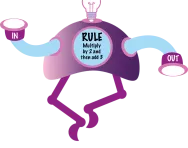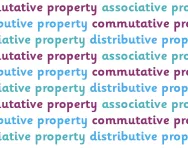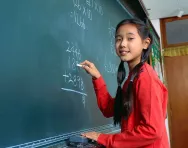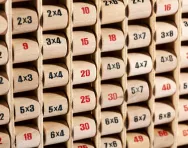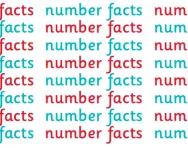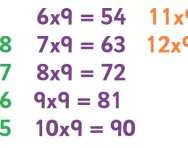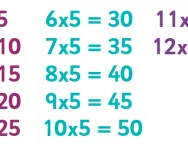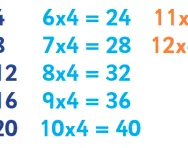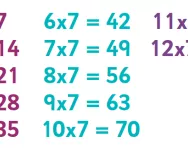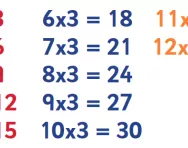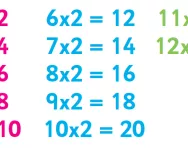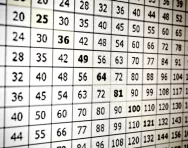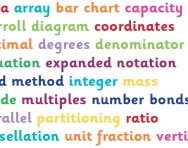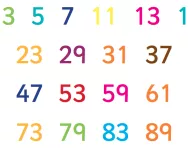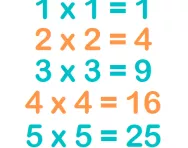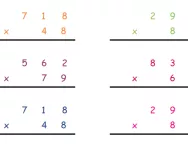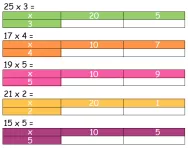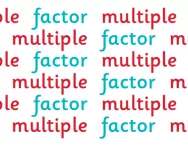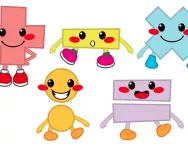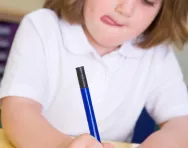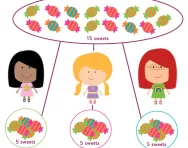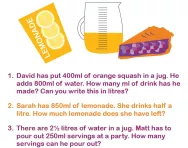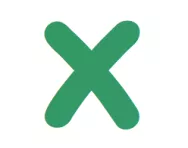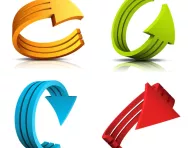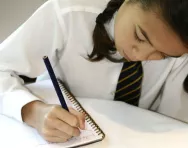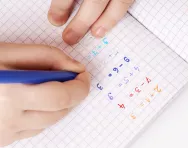What is a function machine?
Function machines are versatile tools in the teaching of mathematics, helping children understand and explore a wide range of mathematical concepts in a fun and engaging way. From basic operations in Key Stage 1 to more complex functions in Upper Key Stage 2, function machines can help play a crucial role in developing children's mathematical understanding and skills.
Best multiplication apps for kids
Multiplication is one of the most important maths skills your child will learn. We've rounded up the best apps to help your child become a multiplication expert.
What are the commutative, associative and distributive property?
The commutative, associative and distributive properties or laws underpin algebra and are first introduced to children, in very broad terms, in the primary-school years. We explain how your child will start to understand the basics of higher maths in our guide for parents.
What is the Asian 'maths mastery' approach?
Many UK primary schools have adopted a way of teaching maths that’s popular in South Asia. We explain what the Asian "maths mastery" method is all about.
Best times tables learning tools
"Times tables practice"... words guaranteed to make any primary-school parent's heart sink. Make multiplication tables learning a little less painful and a little more effective with our pick of the best games, apps, songs and tools on the market.
Best maths story books for children
Introduce ratio, pie charts, probability and even simplifying fractions to children with these brilliant maths story books, picture-book presentations of mathematical concepts that primary-school children will love.
What are number facts?
Children are expected to memorise a number of different number facts in primary school, including number bonds to 20 and the multiplication and division facts for the twelve times tables. We explain what number facts your child will be taught when and suggest easy ways to support their learning at home.
Learning the 6, 8 and 9 times table: tips and tricks
Tips and resources to help primary-school children master the 6, 8 and 9 times tables, with advice from experienced educator and teacher John Bald.
Learning the 5, 10, 11 and 12 times table: tips and tricks
Tips and tricks to help you help your child master the "easy" times tables (5, 10, 11 and 12), plus worksheets, games and activities to put the learning into practice.
Learning the 4 times table: tips and tricks
Practising the 4 times table with your child? Try educator John Bald's table-specific tips to help your child master it, then use 4 times table worksheets and games to consolidate the learning.
Learning the 7 times table: tips and tricks
The 7 times table is often the hardest to learn, but don't lose heart – educator John Bald has specific tips and a step-by-step learning plan to help you help your child master it.
Learning the 3 times table: tips and tricks
Once your child is confident with the 2 times table it's time to move on to 3s and 5s. Follow educator John Bald's advice to help you support your child with the 3 times table and find links to 3 times table worksheets and games.
Learning the 2 times table: tips and tricks
The 2 times table is the foundation of all multiplication tables learning. Follow educator John Bald's practical and very specific advice to help you support your child with the 2 times table and find links to worksheets and games to make practice fun.
Times tables: the best ways to learn
Each multiplication table has its own pattern and poses a different challenge to learners. Teacher and educational consultant John Bald offers practical strategies and ideas to help your child learn each times table and boost their confidence with multiplication.
Primary numeracy glossary for parents
From area to word problems, TheSchoolRun's primary-school numeracy glossary offers a complete guide to all the maths concepts children are taught in EYFS, KS1 and KS2. Brush up on your own mathematical skills, clear up homework confusion and understand exactly what your child is learning at school by reading our basic definitions (with links to more detailed explanations, teachers' tips and examples).
What is a prime number?
We explain what prime numbers are and give examples of the types of questions KS2 children might be asked to test their knowledge of prime numbers.
What are square numbers?
We explain what square numbers are and how children are taught to know square numbers plus the corresponding squares of multiples of 10. We also explain how knowledge of square numbers can help when it comes to working out the area of a square.
What is long multiplication?
We explain what the long multiplication method is and review how multiplication skills are built up through each year of primary school.
What is the grid method?
We explain what the grid method is, how it is taught in primary-school maths and how it is used to multiply a two-digit number by a one-, two- or three-digit numbers, when multiplying amounts of money and when multiplying decimals.
What are multiples and factors?
We explain what multiples and factors are and how children are taught to recognise multiples from Year 1 and factors from Year 5, with examples of the types of problem they might be asked to solve.
What are the four operations?
We explain what the four operations are and how children learn about addition, subtraction, multiplication and division over KS1 and KS2, working towards solving problems involving all four operations.
What is expanded notation?
We explain what expanded notation means, how it is taught in primary school and how it can help children with addition and multiplication calculations.
What is 'shared between'?
We explain what the term 'shared between' means and give examples of typical division problems your child might be set in KS1 and KS2.
What are two-step and multi-step problems?
We explain what two-step and multi-step problems are and give examples of typical problems a child might be asked to solve in primary school (and how the answer can be worked out!).
What is a product?
In maths the product of two numbers is the result you get when you multiply them. We explain how children are taught multiplication vocabulary in KS2 and what kind of problems they might be asked to solve,
Teachers' tricks for multiplication
Can you multiply using the grid method, or draw a multiplication calculation as arrays? Find out more about multiplication and how it’s taught in schools today with our teachers' tips, tricks and methods, explained for primary-school parents.
What are inverse operations?
Inverse operations are opposite operations – one reverses the effect of the other. In primary maths we talk about the inverse to explain how addition and subtraction are linked and how multiplication and division are linked. Teacher Alice Hart offers examples of how and when your child will be asked to use the inverse operation in school, and practical ways to help them understand the concept.
Teachers’ tricks for learning times tables
Do you dread times table practice as much as your child does? Primary school teacher Alice Hart uses these effective learning strategies in her classroom – give them a try to liven up today's homework time.
What is partitioning?
Not sure what your child means when they talk about partitioning numbers in maths problems? We explain the method, and how your child will use it.
